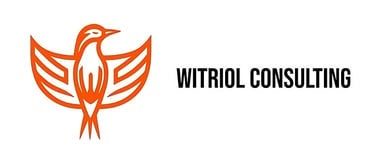How to Leverage Forecasts and Agency Procurement Plans to Get Ahead in Federal Contracting
In the fast-paced world of federal contracting, winning a contract often comes down to timing, preparation, and insight. Too many businesses only start engaging once a Request for Proposal (RFP) is published — and by then, the playing field is already tilted toward those who did their homework months in advance. The most successful federal contractors understand this truth: 👉 Winning begins before the solicitation drops.
EQMENTORORGANIZATIONCOMMAND ECONOMYDATA DRIVENMANAGEMENT CONSULTINGSTRATEGIC PARTNERSHIPSTRADITIONAL ECONOMYMERGERSMARKET ECONOMYCONSULTINGPARTNERSHIPSGROWTHACQUISITIONSLEADERSHIPSTRATEGYCLIENT RELATIONSHIPSGOVERNMENT CONTRACTSFEDERAL CONTRACTINGECONOMICSMARKETING STRATEGYTEAMWORKCOMPLIANCEMENTORSHIPLEAN CONSULTINGCLIENTSFEDERAL CONTRACTS
Shaun Witriol
5/31/20253 min read


How to Leverage Forecasts and Agency Procurement Plans to Get Ahead in Federal Contracting
In the fast-paced world of federal contracting, winning a contract often comes down to timing, preparation, and insight. Too many businesses only start engaging once a Request for Proposal (RFP) is published — and by then, the playing field is already tilted toward those who did their homework months in advance. The most successful federal contractors understand this truth:
👉 Winning begins before the solicitation drops.
One of the best ways to prepare early is by leveraging agency forecasts and procurement plans. These tools give you a clear view into what agencies plan to buy, when they plan to buy it, and how you can position yourself to compete effectively.
Here’s how you can use these resources to get ahead:
🔎 What Are Forecasts and Procurement Plans?
Acquisition forecasts and agency procurement plans are public documents published by federal agencies, outlining their anticipated contracting opportunities for the upcoming fiscal year.
They typically include:
Projected contract requirements
Estimated dollar value
Set-aside status (e.g., 8(a), HUBZone, WOSB, SDVOSB)
NAICS codes
Expected solicitation release dates
Contracting officer or program contact information
These forecasts are required by the Federal Acquisition Regulation (FAR) for many agencies and are usually published on agency websites or portals like Acquisition.gov.
🧭 Step-by-Step: How to Use Forecasts to Your Advantage
1. Identify Target Agencies
Focus on 3–5 federal agencies that align with your core capabilities. For example, if you provide cybersecurity services, target DoD components, DHS, or VA.
🔗 Pro Tip: Look at USASpending.gov or SAM.gov to see which agencies have awarded contracts in your NAICS code over the past 2–3 years.
2. Download and Analyze the Forecasts
Visit your target agencies’ websites or do a simple search:
"[Agency Name] procurement forecast FY2025."
Extract key data:
Contract title and description
NAICS code
Contract value
Set-aside type
Point of contact
Anticipated release date
Create a capture tracker using Excel or a CRM to organize and prioritize opportunities based on fit and readiness.
3. Start the Capture Process Early
Once you identify relevant opportunities:
Reach out to the listed contact person. Introduce your firm, express interest, and ask clarifying questions.
Do your homework. Research the incumbent (if any), pricing history, and past performance requirements.
Position your firm. If it’s a recompete, study how the current contractor is performing and how you can offer more value.
🎯 Remember: If you reach out early, you may influence how the solicitation is structured — including set-aside status and evaluation criteria.
4. Team Up Strategically
Forecasts allow time to:
Form joint ventures
Engage in mentor-protégé agreements
Pursue subcontracting roles
5. Plan Resources Around Release Dates
Use forecast dates to align:
Proposal team availability
Past performance reference readiness
Partner involvement
Internal review schedules
Even if the actual RFP date shifts (and it often does), having your internal calendar aligned ensures you’re not caught off guard.
🔄 Revisit Forecasts Quarterly
Many agencies update their forecasts quarterly or semi-annually. Don’t treat it as a one-and-done activity. Make it a habit to check for:
Newly added opportunities
Changes to scope, timing, or set-aside
Updates to point-of-contact info
This allows you to course-correct early and maintain a competitive edge.
🧠 Beyond Forecasts: Dig Deeper
Agency forecasts are just the beginning. You can combine this data with:
FPDS or SAM.gov to review past contracts
LinkedIn or GovEvents to identify agency officials attending industry events
FBO.gov archives to see how similar work was procured previously
🏁 Final Thoughts
Forecasts and procurement plans are powerful tools — but only if you use them proactively. While your competition is waiting for the RFP to hit SAM.gov, you can be:
Building relationships
Strengthening proposals
Identifying teaming partners
Influencing the acquisition strategy
This isn’t just smart business development — it’s strategic federal capture.
📚 Ready to Get Started?
Here’s a quick checklist:
✅ Identify top 3–5 target agencies
✅ Download and analyze forecasts
✅ Build your internal opportunity tracker
✅ Begin early outreach and positioning
✅ Monitor updates quarterly
With the right approach, forecasts aren’t just future possibilities — they’re your competitive advantage.
We’re also available as a Small Business Enterprise (SBE) partner for primes looking to increase competitiveness on major federal RFPs — especially in digital transformation and construction PM.
👉 Ready to position yourself as a standout subcontractor?
Visit us at www.witriolconsulting.com or email shaun@witriolconsulting.com to schedule a strategy session.
Like and follow Witriol Consulting on LinkedIn, Instagram, Facebook, and YouTube for more insights and strategies on effective leadership and time management.
Current Certifications
Small Local Business Enterprise (SLBE) - (San Diego)
Local Small Business Enterprise - (LSBE) - (Los Angeles)
Minority Owned Business (MBE) - (San Diego and Los Angeles, Federal)
Small Business (Micro) - (California)
Disadvantaged Business Enterprise - (California, Arizona, Oregon, Hawaii)
Small Disadvantaged Business - (Federal)
Asian Pacific Business Enterprise - (Federal)
Pending Certifications
8a - (Federal)
© 2024. All rights reserved.


certifications
consultations
